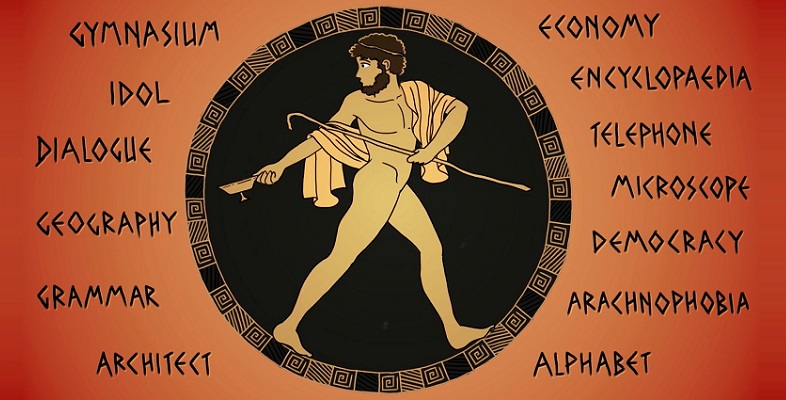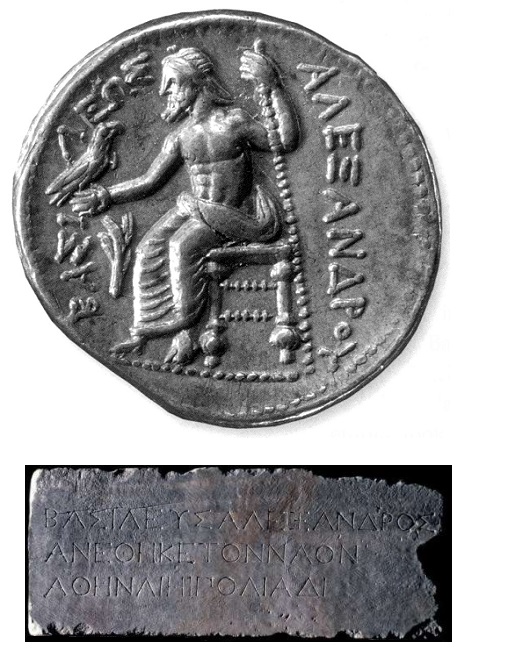2 A Greek example
You can contrast two different endings of the same Greek noun by comparing Alexander’s name on the inscription from Priene with his name on the coin.
Activity 1 Two forms of Alexander
Review the two forms of ‘Alexander’ and remind yourself of any differences:
- Coin: Ἀλεξάνδρου
- Inscription: Ἀλέξανδρος
Discussion
The letters are the same, except for the final one, which is sigma (ς) on the inscription and upsilon (υ) on the coin.
The difference in spelling is small, but the effect is significant. Ἀλέξανδρος is the basic form of Alexander’s name, the one that you would find in a dictionary. To indicate that the coin ‘belongs to’ or is ‘of’ Alexander, the ending has been modified from -ος to -ου.
- Ἀλέξανδρος Alexander
- Ἀλεξάνδρου of Alexander or Alexander’s
Grammatically, ‘Alexander’s coin’ is no different to ‘Fred’s shop’ or ‘the pilot’s licence’. The modified ending indicates that one noun (‘Alexander’ or ‘Fred’) is related grammatically to another (‘coin’ or ‘shop’). The relationship is one of ownership or possession.
The word ‘king’ has also undergone a change, with -εύς (βασιλεύς) becoming -έως (βασιλέως). There’s no need to dwell upon that particular change here, other than to point out that it has been made for a similar reason: to express the fact that this coin is the possession ‘of King Alexander’.

